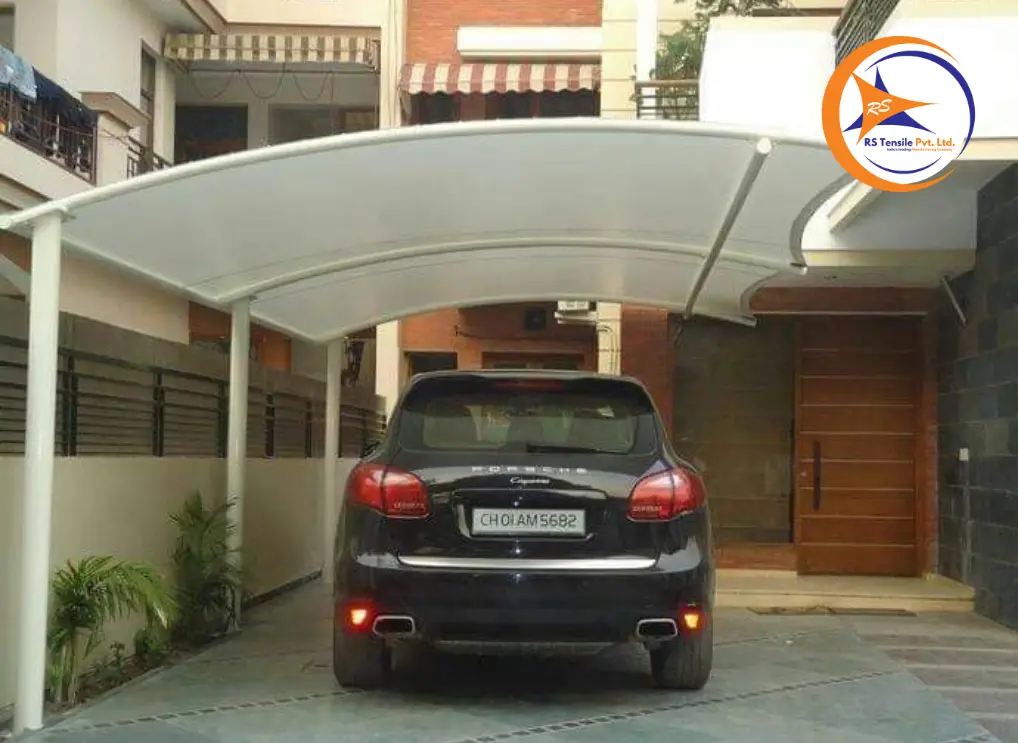Tensile Structure Maintenance Guide
- Blog
- Tensile Structure Maintenance Guide
Tensile Structure Maintenance Guide - Essential Tips for Longevity
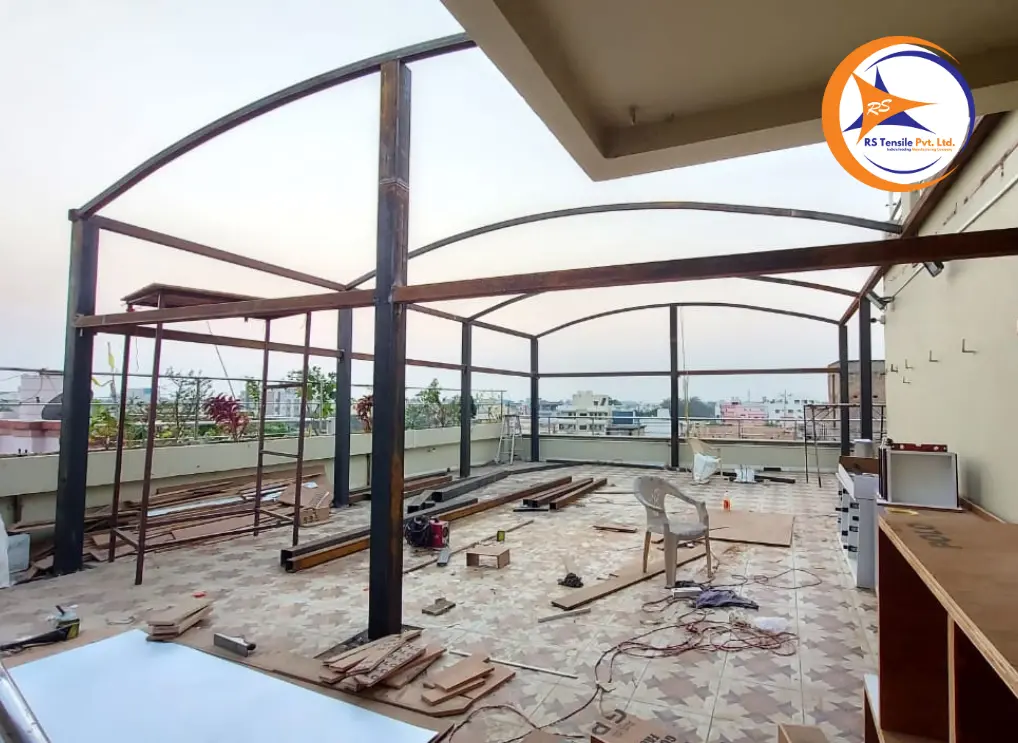
Investing in a high-quality tensile structure is just the first step toward enjoying its many benefits. To ensure your structure continues to perform optimally and maintain its aesthetic appeal for years to come, proper maintenance is essential. At Shiwa Tensile, we believe that regular care and maintenance not only extend the lifespan of your structure but also protect your investment. This comprehensive guide provides essential tips and best practices for maintaining your tensile structure in pristine condition.
Understanding the Importance of Regular Maintenance
Tensile structures are designed to be durable and long-lasting, but like any architectural element, they require regular attention to maintain their performance and appearance. Proper maintenance offers several key benefits:
1. Extended Lifespan
Regular maintenance can significantly extend the lifespan of your tensile structure. While most high-quality membranes are designed to last 15-30 years depending on the material, proper care can help them reach or even exceed their expected service life. This delay in replacement needs translates to substantial cost savings over time.
2. Optimal Performance
Well-maintained tensile structures perform better under various environmental conditions. Regular inspections and maintenance ensure that the structure continues to provide adequate protection from sun, rain, and wind while maintaining its structural integrity and load-bearing capacity.
3. Aesthetic Appeal
The visual impact of a tensile structure is one of its most significant advantages. Regular cleaning and maintenance preserve the structure's appearance, preventing discoloration, staining, and deterioration that can detract from its architectural beauty.
4. Safety Assurance
Regular maintenance ensures that your tensile structure remains safe for occupants and passersby. Inspections can identify potential issues before they become serious problems, preventing accidents and ensuring compliance with safety regulations.
Regular Inspection Schedule
Establishing a regular inspection schedule is the foundation of effective tensile structure maintenance. We recommend the following inspection frequency based on your structure's location and environmental conditions:
1. Monthly Visual Inspections
Conduct a brief visual inspection of your tensile structure each month. Look for obvious signs of damage, such as tears, holes, or loose connections. Check for debris accumulation, particularly after storms or high winds. These quick inspections can help identify issues that require immediate attention.
2. Quarterly Detailed Inspections
Every three months, perform a more thorough inspection of your tensile structure. Examine the membrane surface closely for signs of wear, discoloration, or mold growth. Check all connections, tensioning systems, and support structures for any signs of corrosion, loosening, or damage. Document your findings with photographs for future reference.
3. Annual Professional Inspections
At least once a year, schedule a professional inspection with experts from Shiwa Tensile or another qualified service provider. Professional inspectors have the expertise and equipment to identify issues that may not be apparent during routine inspections. They can also perform specialized tests to assess the condition of the membrane and structural components.
4. Post-Event Inspections
After extreme weather events such as heavy storms, high winds, or significant snowfall, conduct a thorough inspection of your tensile structure. These events can cause stress and damage that may not be immediately visible but could compromise the structure's integrity over time.
Cleaning and Care for Tensile Membranes
Proper cleaning is essential for maintaining the appearance and performance of tensile membranes. The cleaning process varies depending on the membrane material, but the following general guidelines apply:
1. Regular Surface Cleaning
For routine maintenance, clean the membrane surface with a soft brush or low-pressure water spray to remove loose dirt, dust, and debris. Avoid using high-pressure washers, as they can damage the membrane surface or coating. For most membrane materials, cleaning with water alone is sufficient for regular maintenance.
2. Stain Removal
For stubborn stains or organic growth such as algae or mold, use a mild detergent solution specifically formulated for tensile membranes. Apply the solution with a soft brush or sponge, working gently to avoid damaging the membrane surface. Rinse thoroughly with clean water to remove all detergent residue. Always test cleaning solutions on a small, inconspicuous area before applying them to the entire structure.
3. Specialized Cleaning for Different Materials
Different membrane materials require specific cleaning approaches:
- PVC-Coated Polyester - Clean with a mild soap solution and avoid abrasive cleaners. Periodic application of a protective coating may be necessary to maintain the material's properties.
- PTFE-Coated Fiberglass - This self-cleaning material typically requires only occasional rinsing with water. Avoid using any cleaning agents that may damage the PTFE coating.
- ETFE - Clean with water and a mild detergent if necessary. Avoid abrasive materials that could scratch the surface.
- HDPE - Clean with water and a soft brush. For stubborn stains, a mild detergent solution can be used.
4. Professional Cleaning Services
For large structures or difficult-to-reach areas, consider hiring professional cleaning services with experience in tensile structure maintenance. Professionals have the equipment and expertise to clean safely and effectively without damaging the membrane or structural components.
"Regular maintenance is the key to maximizing the lifespan and performance of your tensile structure. A small investment in routine care can prevent costly repairs and replacements down the line, ensuring your structure continues to impress for years to come."
Structural Component Maintenance
While the membrane is the most visible part of a tensile structure, the structural components are equally important for its performance and safety. Regular maintenance of these elements is essential:
1. Steel and Aluminum Components
Inspect all steel and aluminum components for signs of corrosion, rust, or damage. Pay special attention to connection points, welds, and areas where different metals meet. Clean any corrosion using appropriate methods and apply protective coatings as needed. For painted components, touch up any areas where the paint has chipped or worn away to prevent corrosion.
2. Cables and Tensioning Systems
Check all cables and tensioning systems for proper tension and signs of wear or damage. Look for fraying, kinks, or corrosion on cables, and ensure that all turnbuckles and tensioning devices are secure and functioning correctly. Adjust tension as needed according to the manufacturer's specifications or professional recommendations.
3. Connection Points and Anchors
Examine all connection points and anchors for signs of loosening, corrosion, or movement. Ensure that all bolts, nuts, and fasteners are tight and secure. For concrete anchors, check for cracks or deterioration in the surrounding concrete that could compromise the anchor's holding capacity.
4. Foundation and Base Plates
Inspect the foundation and base plates of your tensile structure for signs of settlement, cracking, or movement. Ensure that drainage around the foundation is adequate to prevent water accumulation, which can lead to erosion or foundation issues over time.
Seasonal Maintenance Considerations
Different seasons present unique challenges for tensile structures. Adjust your maintenance routine to address seasonal conditions:
1. Spring Maintenance
Spring is an ideal time for thorough cleaning and inspection after winter. Remove any debris that may have accumulated during winter months. Check for damage caused by snow, ice, or winter storms. Inspect drainage systems to ensure they are clear and functioning properly before the rainy season begins.
2. Summer Maintenance
During summer, focus on managing heat and UV exposure. Check for signs of UV degradation, particularly on older membranes. Ensure that ventilation is adequate to prevent heat buildup under the structure. Inspect irrigation systems or nearby vegetation to prevent overspray or overgrowth that could affect the structure.
3. Fall Maintenance
In fall, prepare your tensile structure for winter by removing fallen leaves and debris that could trap moisture or cause staining. Check tensioning systems and adjust as needed to accommodate temperature changes. Inspect and clean gutters and drainage systems to prevent clogging during winter rains.
4. Winter Maintenance
Winter maintenance focuses on managing snow loads and preventing ice damage. Monitor snow accumulation and remove snow if it exceeds the structure's design capacity. Be cautious when removing snow to avoid damaging the membrane. Check for ice formation in cables and connection points, and address any issues promptly to prevent damage.
Common Issues and Troubleshooting
Even with regular maintenance, issues can arise with tensile structures. Here are some common problems and how to address them:
1. Membrane Tears or Punctures
Small tears or punctures can often be repaired using patch kits specifically designed for tensile membranes. Clean the damaged area thoroughly, apply the patch according to the manufacturer's instructions, and ensure proper adhesion. For larger tears or damage in critical areas, consult with professionals from Shiwa Tensile for appropriate repair solutions.
2. Loose or Wrinkled Membrane
If the membrane appears loose or wrinkled, it may indicate a loss of tension. Check the tensioning system and adjust as needed according to the manufacturer's specifications. Be cautious not to over-tension, as this can cause damage to the membrane or structural components. If you're unsure about the proper tension levels, consult with a professional.
3. Water Ponding
Water ponding on the membrane surface can lead to staining, premature deterioration, and structural issues. Ensure that the structure maintains proper tension and slope for drainage. Clear any debris that may be blocking drainage paths. In some cases, additional tensioning or minor adjustments to the support structure may be necessary to eliminate ponding areas.
4. Corrosion of Metal Components
Address corrosion on metal components promptly to prevent further deterioration. Remove loose rust and corrosion products using appropriate methods, such as wire brushing or sanding. Apply a rust-inhibiting primer and touch-up paint to protect the exposed metal. For severe corrosion, consult with professionals about component replacement or more extensive repairs.
- Regular Inspections - Monthly, quarterly, and annual checks to identify and address issues early.
- Membrane Care - Proper cleaning techniques for different membrane materials to maintain appearance and performance.
- Structural Maintenance - Care of cables, tensioning systems, and support components to ensure structural integrity.
- Seasonal Adjustments - Season-specific maintenance to address weather-related challenges throughout the year.
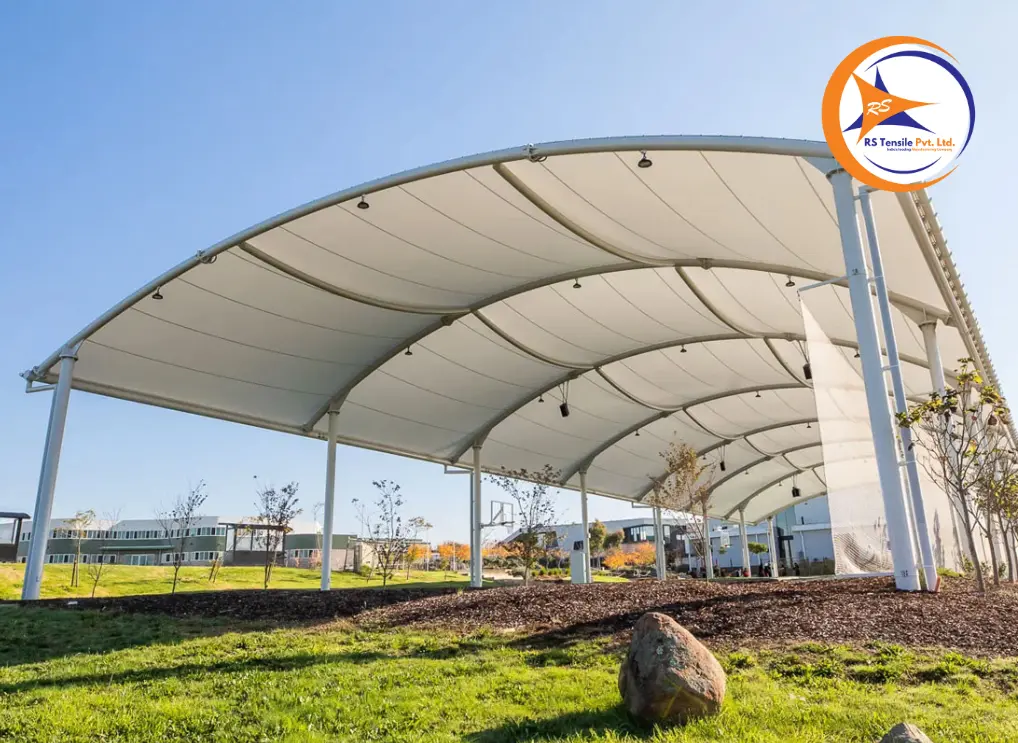
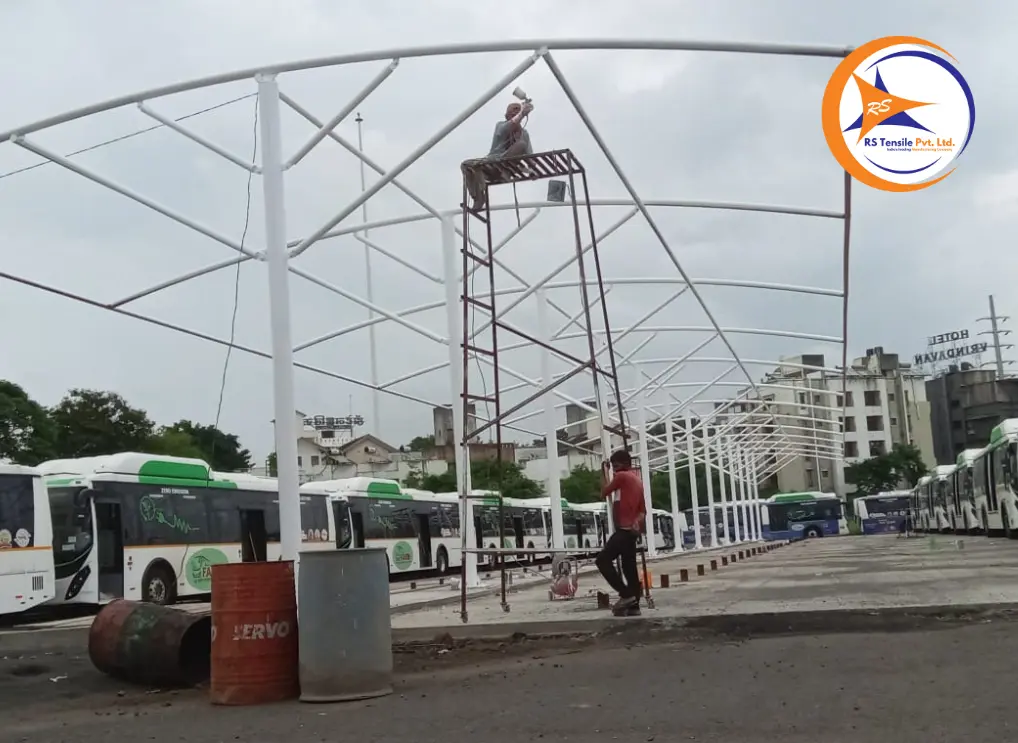
Professional Maintenance Services
While many maintenance tasks can be performed by the structure owner or facility staff, certain aspects of tensile structure maintenance are best left to professionals. At Shiwa Tensile, we offer comprehensive maintenance services designed to keep your structure in optimal condition:
1. Comprehensive Inspection Services
Our professional inspection services include thorough assessment of all structural and membrane components, identification of potential issues, and detailed reporting with recommendations for maintenance or repairs. We use specialized equipment and techniques to evaluate the condition of your structure accurately.
2. Professional Cleaning Services
Our team is equipped to clean tensile structures of all sizes safely and effectively. We use industry-approved cleaning methods and solutions that remove dirt and stains without damaging the membrane surface or structural components.
3. Tension Adjustment and Calibration
Proper tension is critical for the performance and longevity of tensile structures. Our technicians have the expertise and equipment to adjust and calibrate tensioning systems to manufacturer specifications, ensuring optimal performance.
4. Repair and Replacement Services
When repairs or component replacements are necessary, our team provides prompt, professional service to restore your tensile structure to its original condition. We use high-quality materials and proven techniques to ensure lasting repairs.
5. Maintenance Contracts
For peace of mind and consistent care, we offer customized maintenance contracts tailored to your specific structure and requirements. These contracts include regular inspections, cleaning, and preventive maintenance to keep your tensile structure in excellent condition year-round.
Documentation and Record Keeping
Maintaining detailed records of all inspections, maintenance activities, and repairs is essential for effective tensile structure management. We recommend the following documentation practices:
1. Maintenance Log
Keep a comprehensive log of all maintenance activities, including dates, personnel involved, tasks performed, and observations. This log provides a valuable history of your structure's condition and maintenance over time.
2. Photographic Documentation
Take photographs before and after maintenance activities, and document any issues or repairs. Visual records are particularly useful for tracking changes in the structure's condition over time and for communicating with maintenance professionals.
3. Warranty and Service Records
Maintain copies of all warranties, service contracts, and professional inspection reports. These documents are important for warranty claims and for planning future maintenance activities.
4. Material and Component Specifications
Keep detailed records of the materials and components used in your tensile structure, including manufacturer specifications and recommended maintenance procedures. This information is invaluable for ordering replacement parts and ensuring proper maintenance techniques.
Conclusion: Investing in Longevity
Proper maintenance is the key to maximizing the lifespan, performance, and aesthetic appeal of your tensile structure. By implementing a regular maintenance schedule, addressing issues promptly, and seeking professional assistance when needed, you can protect your investment and enjoy the benefits of your structure for many years to come.
At Shiwa Tensile, we are committed to helping our clients maintain their structures in optimal condition. Whether you need professional inspection services, cleaning, repairs, or customized maintenance contracts, our team has the expertise and experience to meet your needs. Contact us today to learn more about our maintenance services and how we can help you protect your tensile structure investment.
Remember, a small investment in regular maintenance can prevent costly repairs and replacements down the line, ensuring that your tensile structure continues to impress and perform for years to come.
Tensile Membrane Structure Materials
Tensile Structure Installation Process
All Blog Posts
-
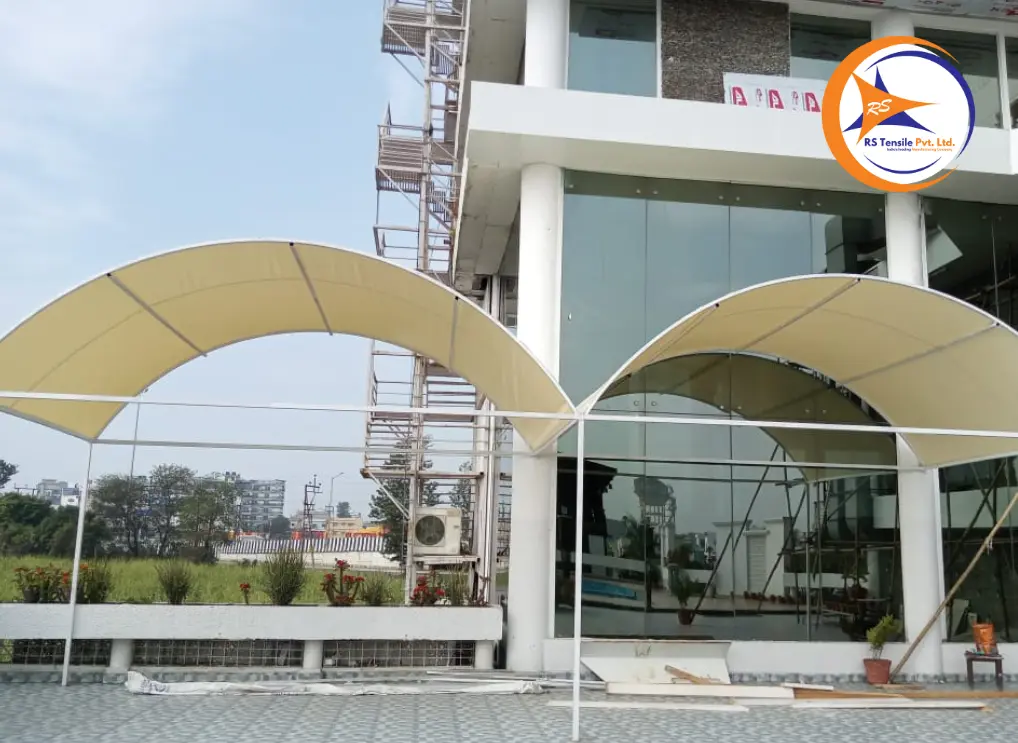
-
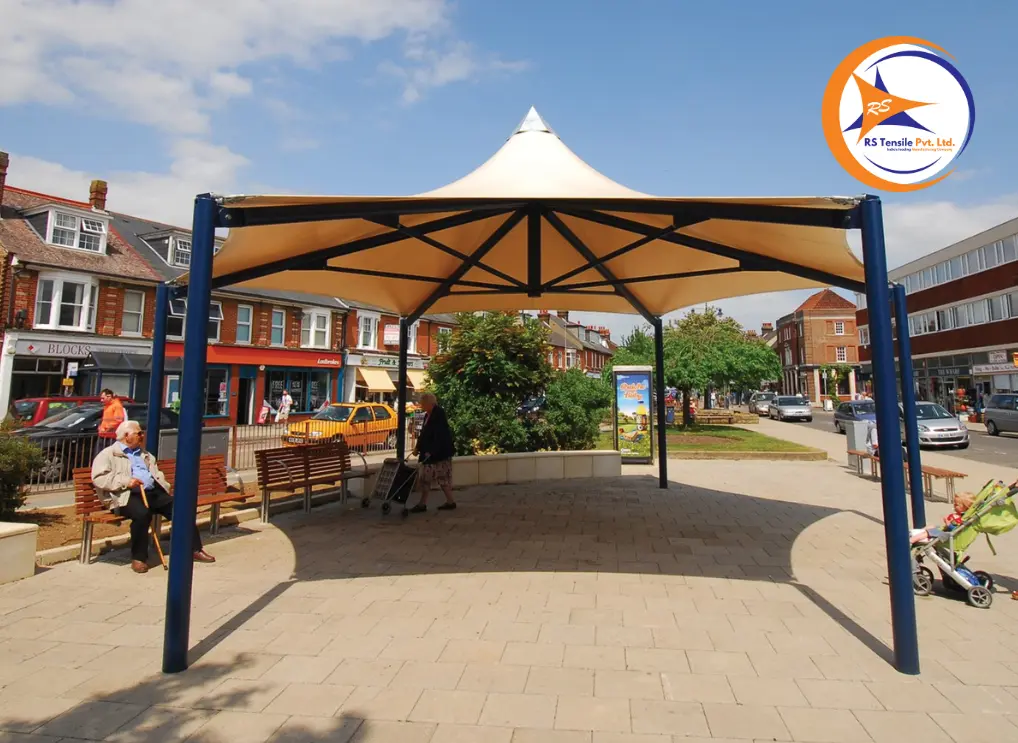
Tensile Structure Best Price in Delhi
Jul 28, 2025 -
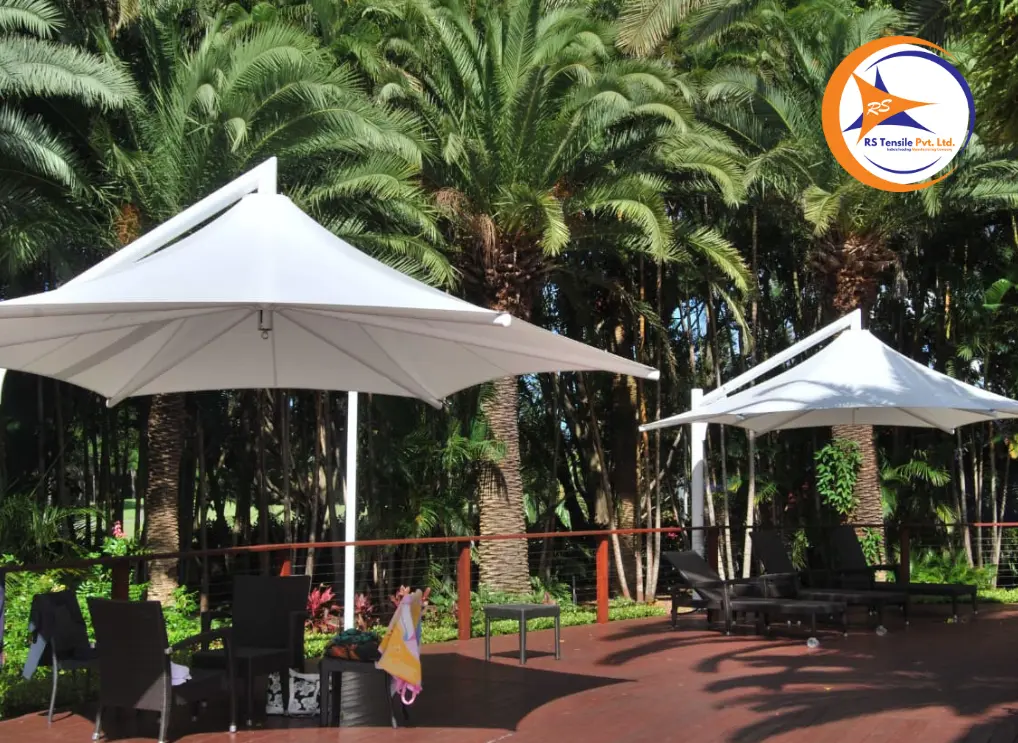
Tensile Structure Manufacturer in India
Jul 10, 2025 -
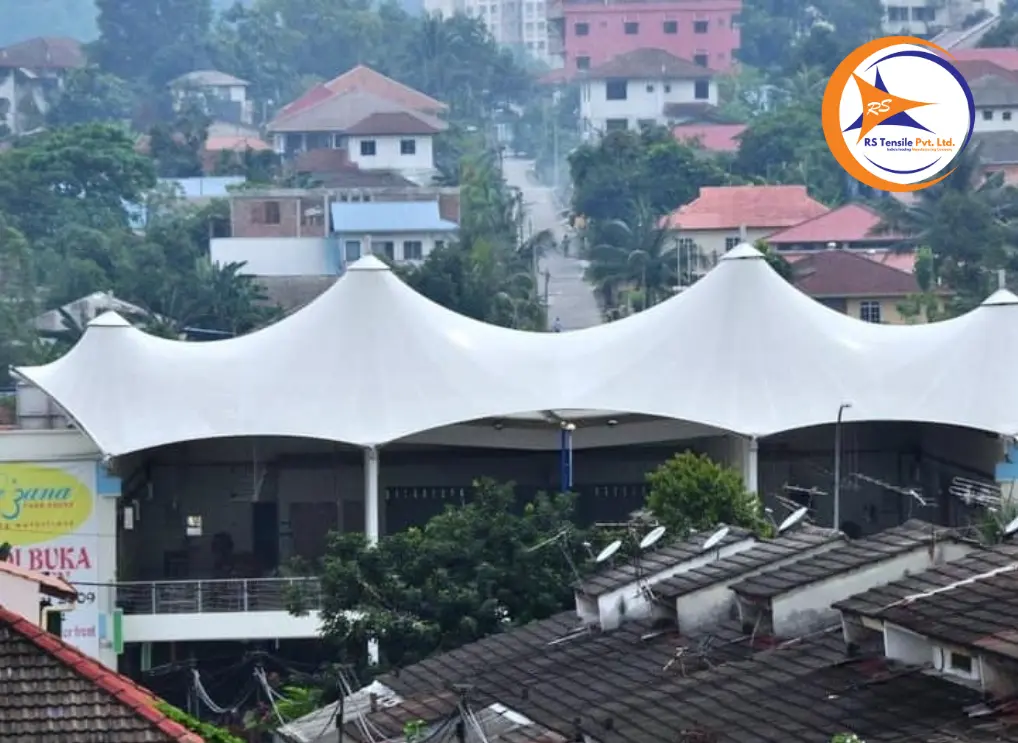
What is Tensile Structure
Jun 25, 2025 -
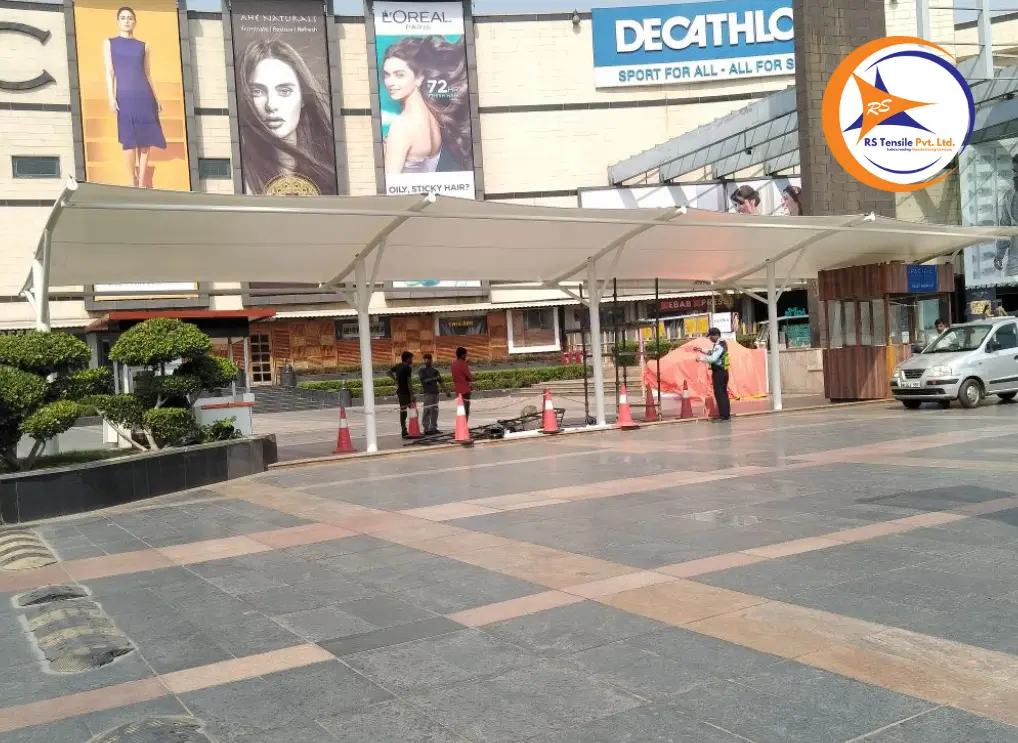
Tensile Structure Companies in Uttar Pradesh
Jun 15, 2025 -
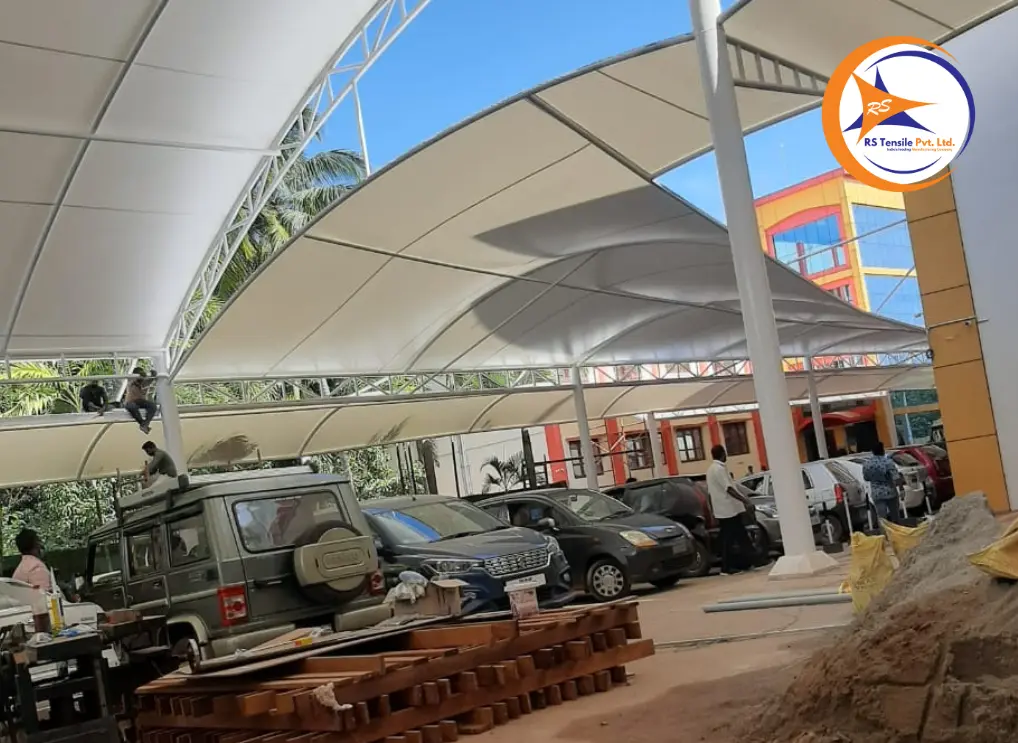
Tensile Car Parking Structure Manufacturer
Jun 05, 2025 -
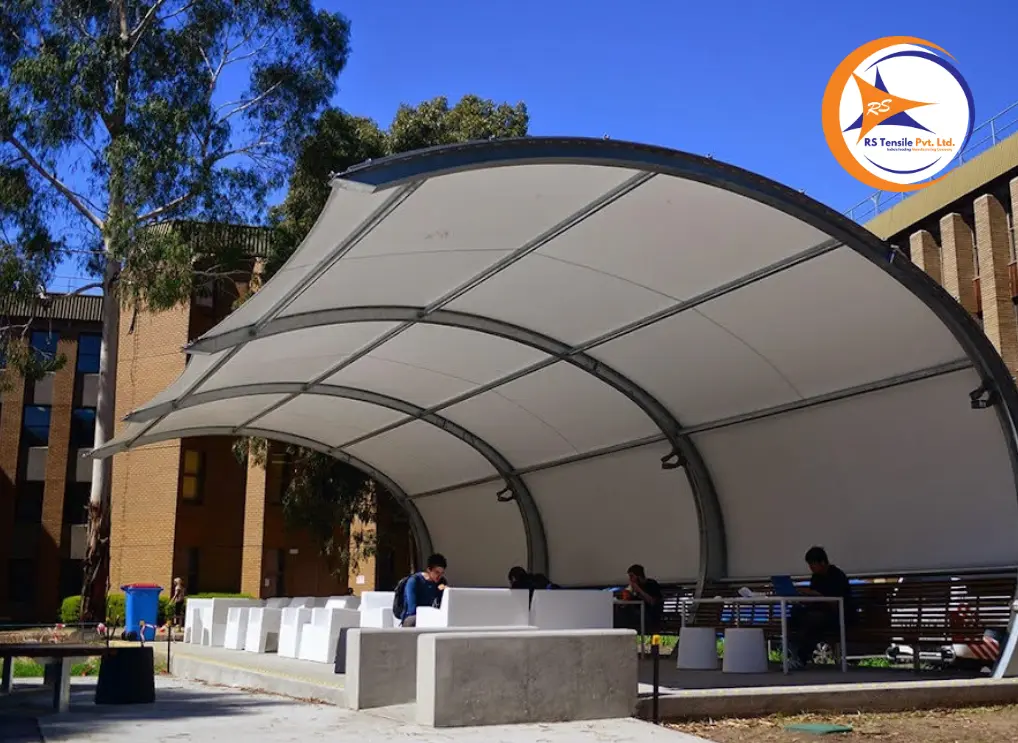
Modern Tensile Structure Design Trends in India
May 20, 2025 -
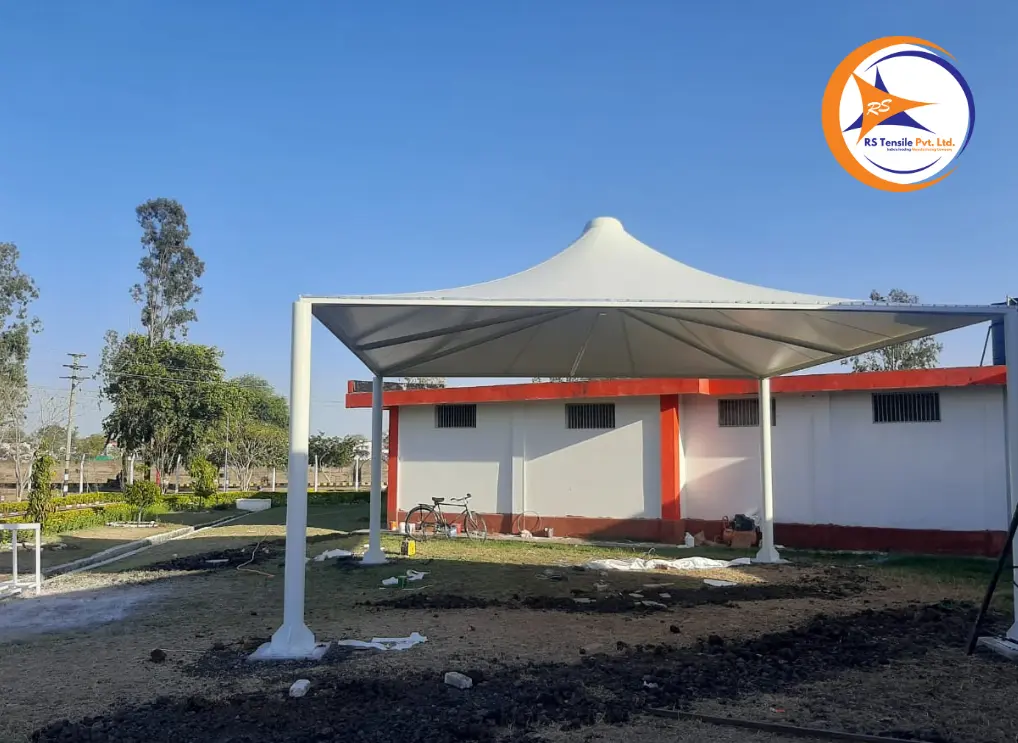
Tensile Gazebo Structure Applications
May 01, 2025 -

Tensile Membrane Structure Materials
Apr 20, 2025 -

Tensile Structure Maintenance Guide
Apr 10, 2025 -

Tensile Structure Installation Process
Apr 01, 2025
Submit Your Enquiry
RS Tensile Support
Online now




